Nvidia GeForce RTX 4090 Unboxing
Lovelace is big and beautiful!
Nvidia's RTX 4090 Founders Edition has arrived and is primed for testing and benchmarks, getting ready to take on the best graphics cards and lay claim to the pole position in our GPU benchmarks hierarchy. How fast can Ada Lovelace run, and how much does she weigh? Those are not questions you're supposed to ask a lady! Shame on you. (2186g, if you really want to know.)
Card dimensions are nearly the same as the previous generation RTX 3090 Founders Edition, 305x136x61mm. The RTX 3090 Founders Edition by way of reference was 313x138x54mm (those are my measurements), so the two designs definitely aren't identical. Ada is apparently 8mm shorter and 7mm thicker, though the 3-gram difference in weight certainly won't be noticed.
Along with a slight change in dimensions, the fans on the RTX 4090 Founders Edition are much larger. The "back" fan (on the side with the larger RTX 4090 logo) is 115mm in diameter, where the same fan on the 3090 FE was 110mm. The "front" fan (on the side with with all the fins and closest to the video ports) also measured 115mm in diameter on the 4090, compared to 110mm on the 3090 FE. But it's not just the diameter that have changed, as the inner hub is smaller as well — 38mm diameter on 4090 vs 42mm on 3090. All told, Nvidia says the new fans improve airflow by 20%.
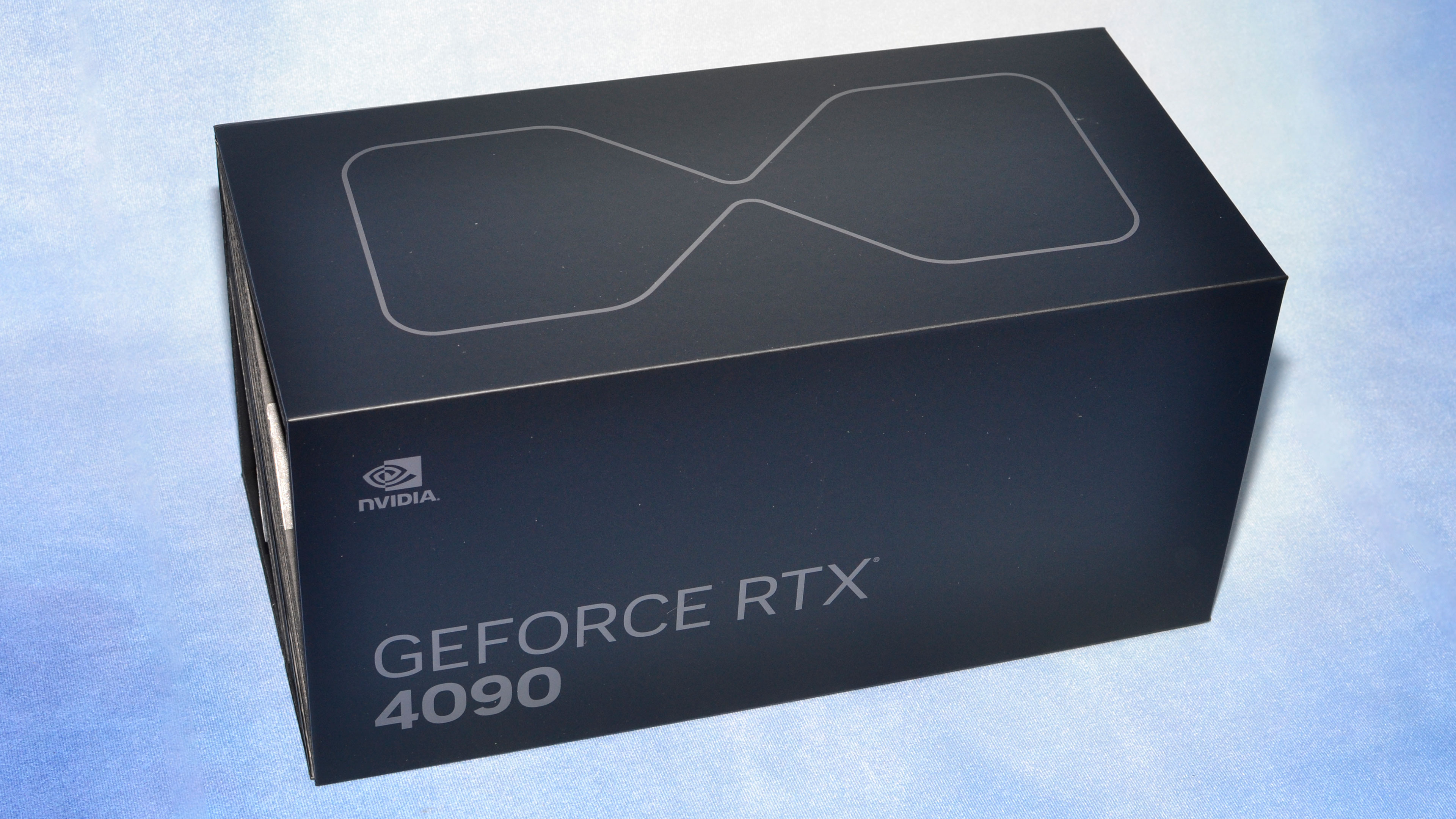







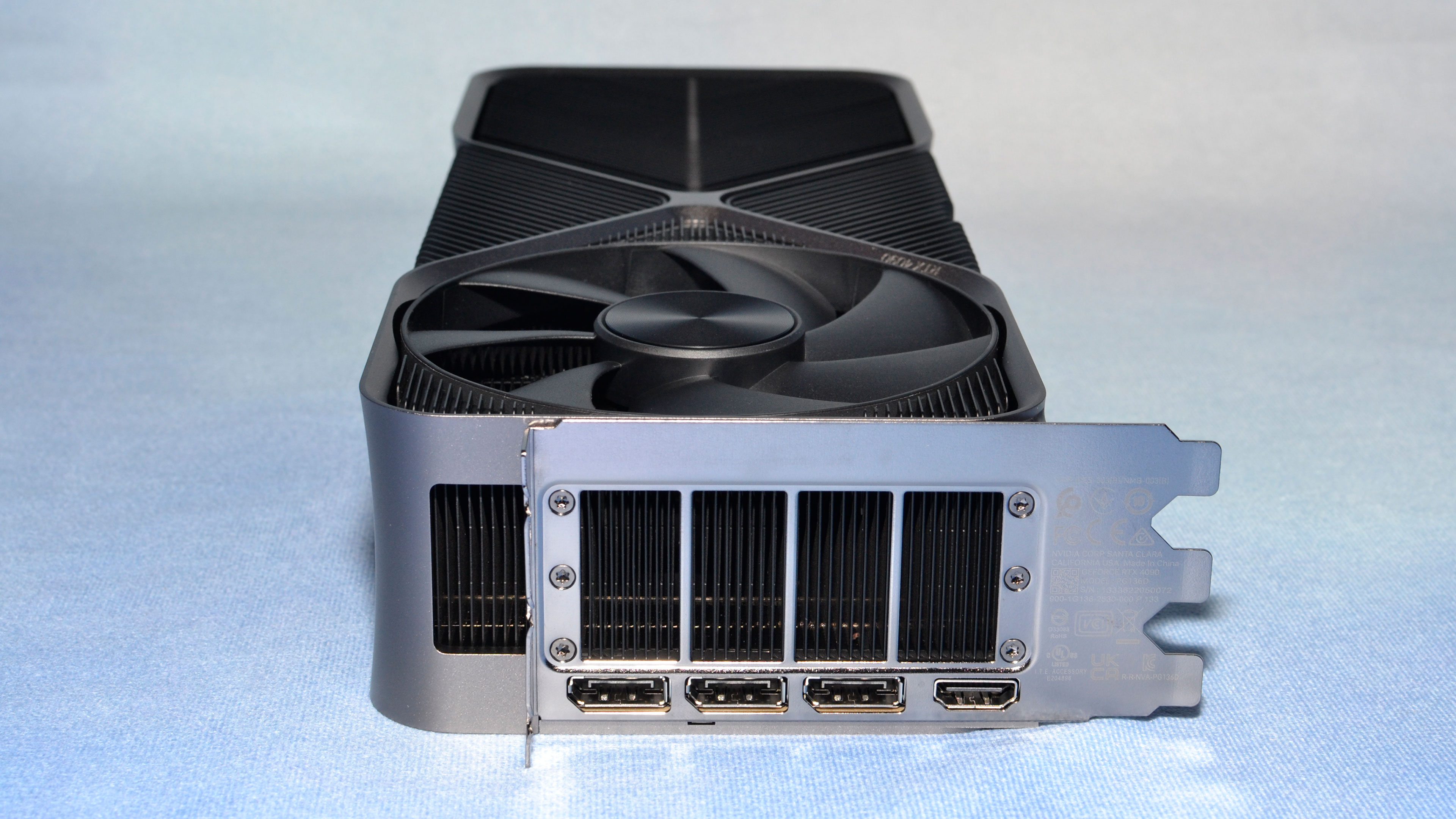






We're not going to walk through the unboxing process, as the embedded video will do a better job if you want more detail, but Nvidia clearly isn't skimping on packaging. Suffice it to say that the RTX 4090 Founders Edition comes in a new, larger box with plenty of padding to keep it safe during shipping.
Superficially, it's easy to come to the conclusion that nothing much has changed with the 4090 design compared to the 3090. The card does have a larger volume, however, and there's a slight curvature to the silver sides (top and back, mostly). That has to be for aesthetic reasons rather than something that will make the card run cooler.

One interesting tidbit is that Nvidia mentioned at one point that the 4090 FE would include a triple-8-pin to 16-pin power adapter for those that don't have an ATX 3.0 power supply with the new 12VHPWR 16-pin connector. Opening up the packaging, however, we find a quad-8-pin to 16-pin adapter. You have to wonder if Nvidia was thinking about going with a 600W TBP and decided to tone things down, or if the extra connector is to provide overclocking headroom.
Elsewhere, the card still comes with the usual triple DisplayPort and single HDMI video outputs. We're frankly surprised that Nvidia stuck with DP 1.4a and HDMI 2.1, rather than upgrading to DisplayPort 2.0. Except, as we noted in our Intel Arc A770 review, there are no DisplayPort 2.0 monitors yet, and the specifications have become a bit muddled. Intel opted for UHBR 10 — Ultra High Bit Rate, 10 Gb/s per lane, 40 Gb/s maximum — on it's DP 2.0 ports, omitting both UHBR 13.5 and UHBR 20 support.
The RTX 4090 and other Ada Lovelace GPUs can still support 8K at 60 Hz, or 4K at 165 Hz, but they require DSC (Display Stream Compression) to get there — and while DSC is "visually lossless," that's not the same as truly lossless. Without DSC, DP1.4a maxes out at 3840x2160 and 98Hz with full 8-bit RGB color. UHBR 20 would have allowed up to 8K and 92 Hz with uncompressed signals and 8-bit color, or 74 Hz with 10-bit HDR color, and DSC could have pushed 8K and 120 Hz or higher. But again, we need the monitors and TVs before that would really matter, and that might not happen for several more years.


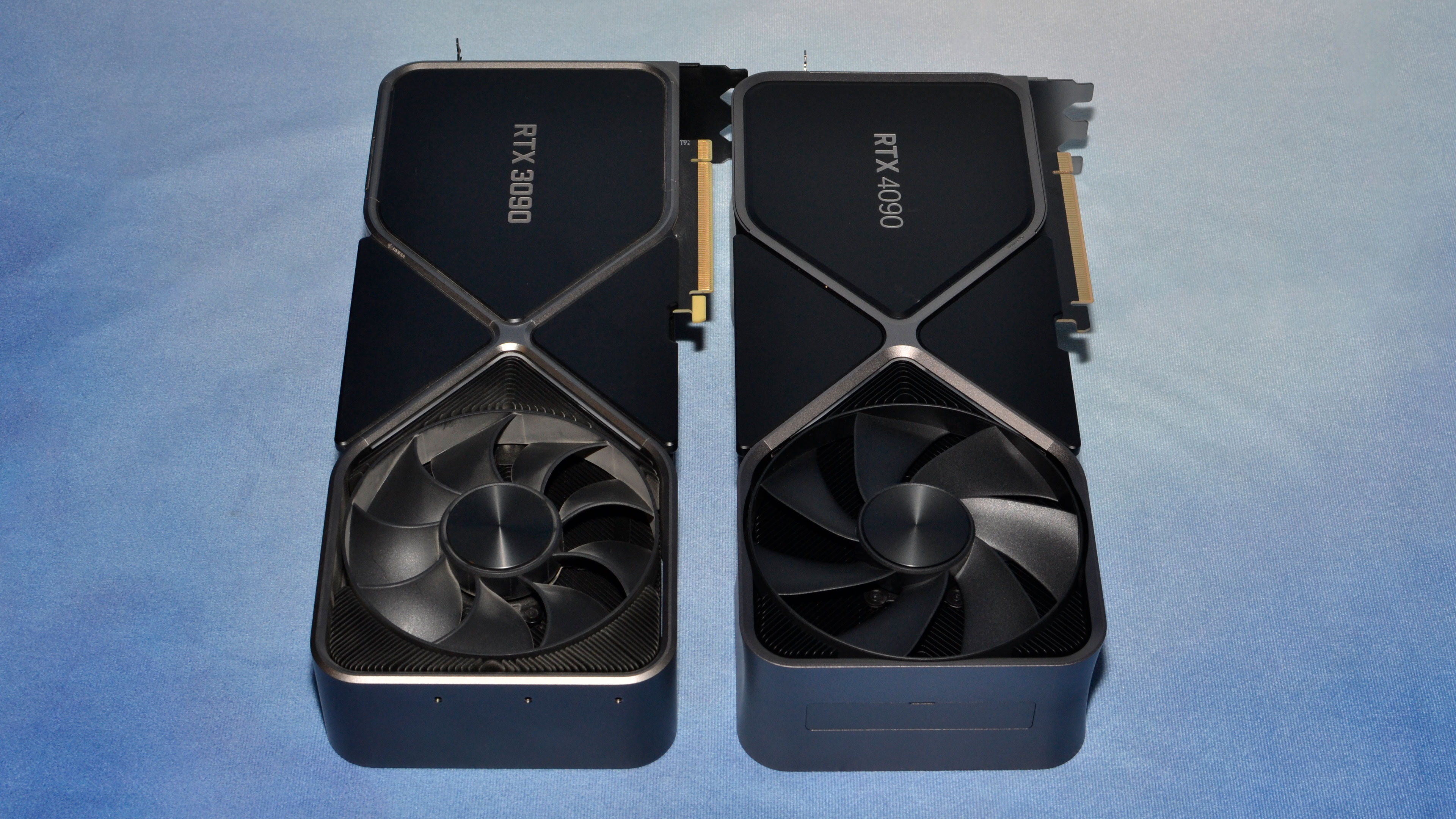


Here's a gallery of side-by-side photos comparing the RTX 3090 FE with the RTX 4090 FE. (Don't mind the dust on the RTX 3090 card; it's been well-loved over the past two years!) It's far more obvious in these shots how the fans and dimensions of the cards have changed.
If your PC already has an RTX 3090 Founders Edition (or a 3090 Ti FE for that matter), you're probably fine with the RTX 4090 FE, unless you're really cramped on clearance. But if you're cramped on clearance, that's not a good thing with cards that can consume 350W or more power. Basically, we recommend using a more spacious ATX case for extreme GPUs like the 3090 and 4090 — leave the mini-ITX stuff behind.








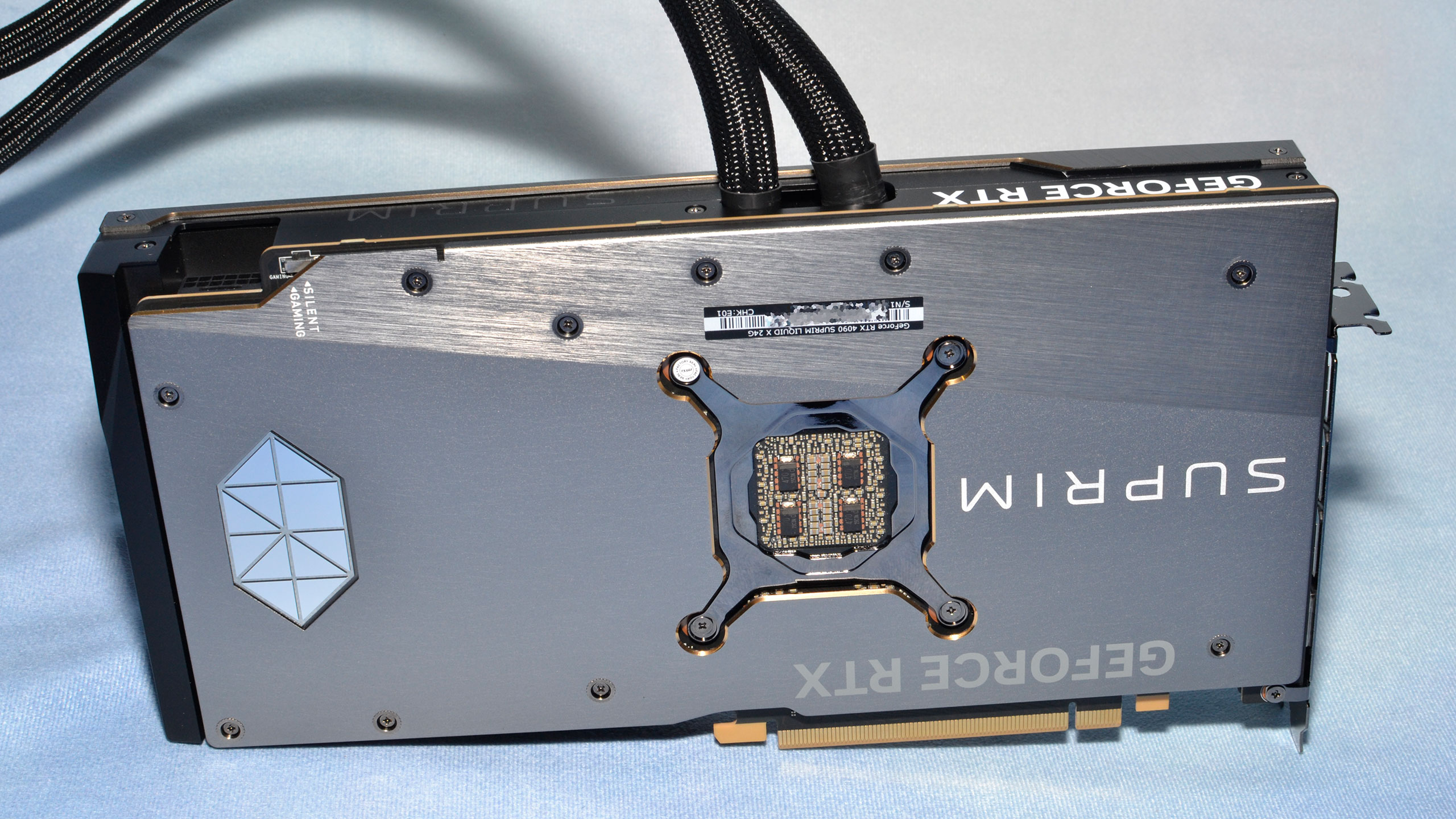





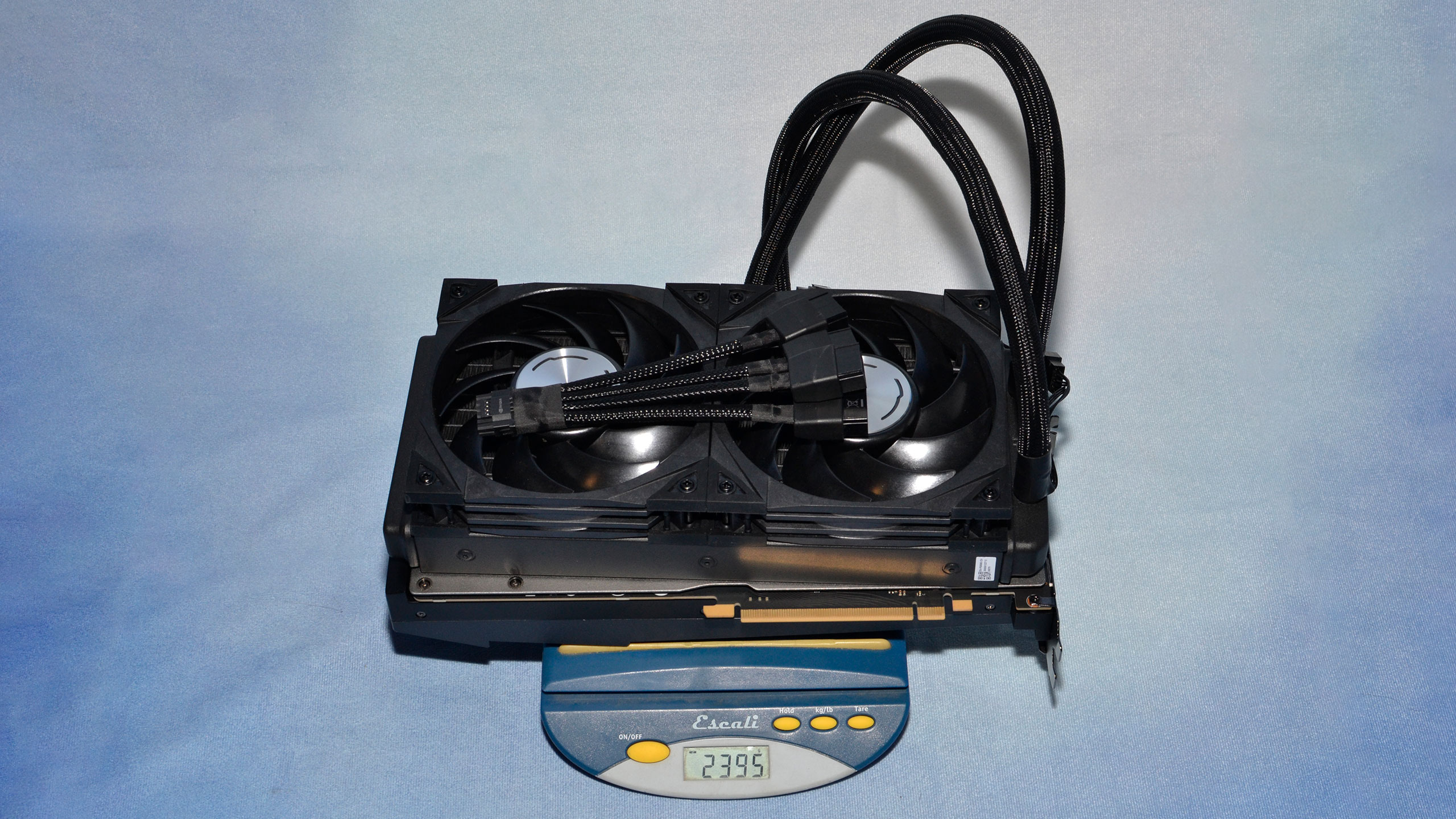
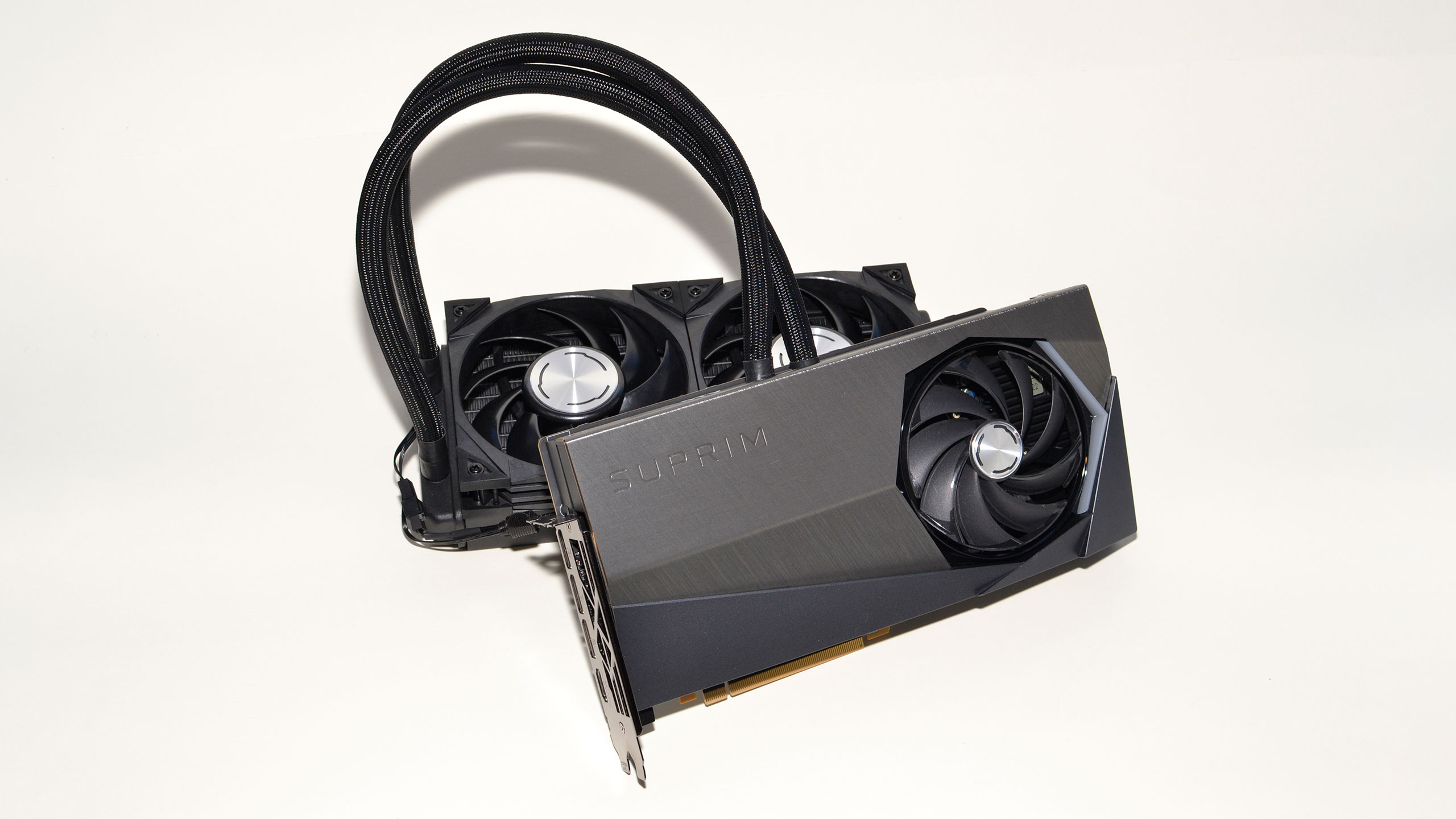
Do you prefer something other than Nvidia's reference design Founders Edition? We wouldn't blame you, as anyone spending this much money on an RTX 4090 will likely want factory overclocks, enhanced cooling, and maybe some other extras.
The MSI RTX 4090 Suprim Liquid X ticks all of those boxes, with a 240mm radiator helping to keep the card frosty. One of the nice things about liquid-cooled graphics cards is that the radiator effectively moves a lot of the weight away from the PCIe slot and over to the case. It also allows for a relatively svelte dual-slot graphics card, though the total size of the card plus radiator ends up being even larger.
MSI doesn't have the GPU clocks listed on its specifications page yet... and we're not sure we're allowed to tell you. It also doesn't list a TBP (Total Board Power), but it includes a quad-8-pin to 16-pin adapter, so we might actually see a 600W card. We're also waiting to find out the official price for this liquid cooled monster. Hint: not cheap!
We'll be testing the card and posting the review next week, though, so hang tight.
Next up is the Asus RTX 4090 ROG Strix OC. This card actually "wins" in the bigger is better battle, tipping the scales at 2508g and with dimensions of 357.6x149.3x70.1mm according to Asus. It's also a factory overclock with a default Gaming mode boost clock of 2610 MHz (90 MHz higher than the Founders Edition) and an OC mode boost clock of 2640 MHz.
As with other RTX 4090 models, the Strix card comes with a quad-8-ping to 16-pin adapter. These adapters all appear to come direct from Nvidia, as the company's name is on the part. Asus doesn't list a specific TBP for the Strix but does recommend a 1000W PSU. Asus also notes that it assumes both CPU and GPU overclocks when it makes that recommendation, so perhaps the card "only" uses around 500W.
One thing that sets the Asus card apart from the other 4090 models we've seen so far is it's inclusion of two HDMI 2.1 outputs along with three DisplayPort 1.4a outputs. Only four displays can be active at the same time, but giving users two HDMI connections provides a bit more flexibility.
We're still waiting for the official word on pricing from Asus, but we typically expect about a $200 premium for ROG Strix models in the upper echelon, sometimes more. Then again, with the collapse of cryptocurrency mining on GPUs, perhaps there's a chance we'll start to see prices trend back toward some semblance of normalcy.

We have some additional RTX 4090 graphics cards from AIB (add-in board) partners slated to arrive in the near future. We'll update this article with additional unboxing photos and videos as they come, while we look forward to the actual launch date.
We're not allowed to give benchmarks or any indication of independent performance testing yet, though Nvidia has already shared some of its own benchmarks. Big ticket items for the Ada Lovelace GPUs include support for the new DLSS 3 algorithm, over 50% more GPU shaders, and other enhancements to the architecture that could potentially boost performance by 2X or more — that's according to Nvidia.
The launch date is set for October 12, with a starting price of $1,599 for the RTX 4090 Founders Edition. We can only hope that supply is sufficient to keep scalpers from ruining the launch party. Meanwhile, if you're not already running an 850W or better PSU, it might be time for an upgrade should you plan on adding an RTX 4090 to your PC. Check back next week for the full review.
Get Tom's Hardware's best news and in-depth reviews, straight to your inbox.

Jarred Walton is a senior editor at Tom's Hardware focusing on everything GPU. He has been working as a tech journalist since 2004, writing for AnandTech, Maximum PC, and PC Gamer. From the first S3 Virge '3D decelerators' to today's GPUs, Jarred keeps up with all the latest graphics trends and is the one to ask about game performance.
-
spongiemaster Can you tell us what's under the little slot cover at the end of the 4090 FE card? Or is that under NDA?Reply -
tennis2 Most cards gonna be 3 - 3.75 slots. Might as well just turn the (axial) fans sideways and blow out the back of the case now. Sure would beat having 450W dumped onto your CPU area.Reply
Kinda makes me wonder how a 2.5-3 slot deep centrifugal fan would perform!!! -
boe rhae How are SFF builds supposed to accommodate cards of this size? You basically don't have a choice; you're either going to use a custom block for the card or you're not going to use it at all in MicroATX / MiniITX cases.Reply -
Micheloblite Reply
That's where you attach your GPU brace to keep from saggin'spongiemaster said:Can you tell us what's under the little slot cover at the end of the 4090 FE card? Or is that under NDA? -
Micheloblite Reply
SFF is out. Invalidea has thrown the towel in on the SFF and budget band. That will bite them on the ass. They designed this chip with crypto in mind and it's blowing back into their faces. Monolithic chips of these size? Please. Chiplets are the future. AMD are already on it, and Intel isn't far behind. Unfortunately Invalidea tried to cash in on this gen with power users and crypto farms. Huge mistake they made, and it's reflecting in their stocks and dividendsboe rhae said:How are SFF builds supposed to accommodate cards of this size? You basically don't have a choice; you're either going to use a custom block for the card or you're not going to use it at all in MicroATX / MiniITX cases. -
Micheloblite Reply
Just crank up the res in Teardown, and angle the fans towards your bed when you need a space heatertennis2 said:Most cards gonna be 3 - 3.75 slots. Might as well just turn the (axial) fans sideways and blow out the back of the case now. Sure would beat having 450W dumped onto your CPU area.
Kinda makes me wonder how a 2.5-3 slot deep centrifugal fan would perform!!! -
brian532 Reply
Watch the video. Something to do with mounting.spongiemaster said:Can you tell us what's under the little slot cover at the end of the 4090 FE card? Or is that under NDA? -
boe rhae ReplyMicheloblite said:SFF is out. Invalidea has thrown the towel in on the SFF and budget band. That will bite them on the ass. They designed this chip with crypto in mind and it's blowing back into their faces. Monolithic chips of these size? Please. Chiplets are the future. AMD are already on it, and Intel isn't far behind. Unfortunately Invalidea tried to cash in on this gen with power users and crypto farms. Huge mistake they made, and it's reflecting in their stocks and dividends
This 40xx launch has been hard to watch. EVGA leaving thanks to mistreatment, the PSU confusion, the lying about their 4070/4060ti actually being a 4080 (lol) and now this insult to anyone who doesn't like having a massive setup.
I am buying parts for an ATX system right now in the Define 7, but the plan is to build in the Lian Li Q58 next, which is a mini-ITX case, because I love SFF builds I've seen online. It's just not going to be possible with cards of this size, especially if it's a custom loop that has to accommodate a res, a rad, the pipes, etc.
This is not how you give your community faith in your business, guys...


